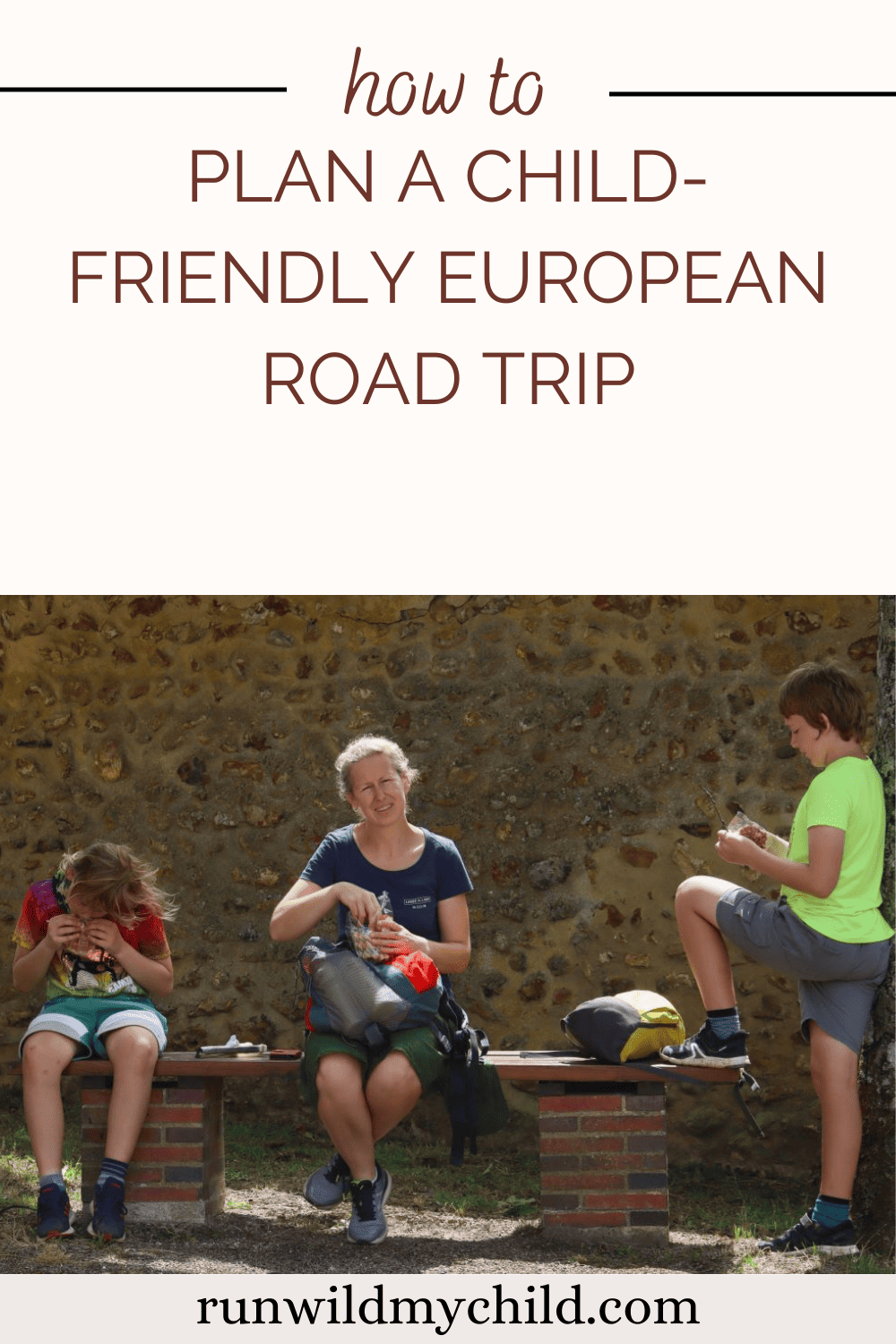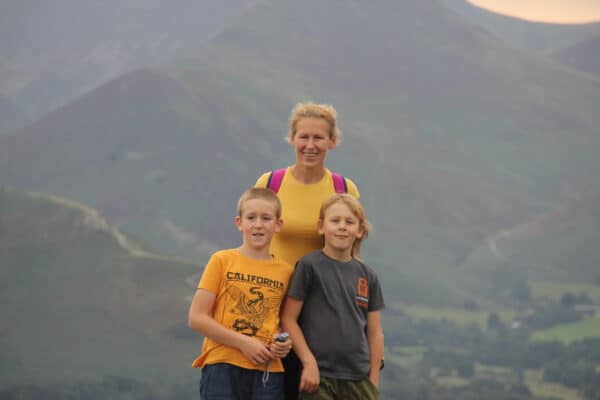so Going on a European road trip with kids is not just a journey; it’s a self-guided adventure! From medieval castles to sun-soaked beaches, Europe offers so many unique experiences for families seeking a blend of cultural enrichment and outdoor escapades. Today, Anna Stopinska-Lewucha, a UK mum of two, talks about why her family chooses road trips instead of organized holidays and how they do it. This post will cover step-by-step how they prepare for their European road trips and illustrate that the efforts are worth it. She’ll delve into the art of choosing family-friendly accommodations, the best outdoor kid-friendly activities along the way, and how to save money on your travels. Ready to learn how to navigate the open roads of Europe with kids? Let’s go!
What’s a holiday to you?
If you ask the average mum how her family spends their main summer gateway, you’ll most likely hear that they book an all-inclusive holiday package to somewhere tropical and sunny. She might tell you that’s because it’s easy, convenient, insured, and child-friendly. And all of that would be true. For many families, all they want while on vacation is pretty water, warm sand, guaranteed sunshine, great food, and no worries or hassles. And that sounds like a good holiday, indeed.
However, every vacation or holiday doesn’t have to be the same. Has it ever crossed your mind that your precious time away, as a family, could be a little bit more experimental and adventurous? Rugged and exciting?
There’s definitely room for those picture-perfect tropical beach trips, but I’d also like you to consider adding some good old-fashioned fun to an upcoming holiday by taking a family road trip!
The tempting taste of adventure
Before we had kids, backpacking and minimal preparation was the way to go for us. We hitchhiked, used local transport, slept in cheap hostels, and had very flexible itineraries. Even our honeymoon was a hitchhiking trip through nine European countries, with a small, cheap tent, and on a very low budget. And what an adventure it was!
However, with the arrival of our children, we realised it was time to be a bit more reasonable with our vacations. We still craved adventure, both for ourselves and for them, but it looked different than what we were used to.
Our first road trip experience with kids
When our older son, Stefan, was 13 months old, we braved a little road trip around the southern part of Norway. We saw a lot, and it brought back so many lovely memories. However, that trip included a hospital visit. One of any parent’s biggest fear is that their children will get sick or hurt while travelling. And it did actually happen to us. It was very scary, but, in retrospect, I can say that this experience was valuable, and it gave us a lot of courage for the future.
It showed right away that we could handle hard things. We realised that if we need help, it will be there (having insurance and knowledge of how to use it is a must). I feel it’s important and fair to mention that experience here, because a road trip is a self-made and self-get-out-of-the-possible-trouble affair. Things can go awry on a trip like this, forcing you to adjust, be flexible, adapt, and figure things out as you go. But it’s also a lot of fun!
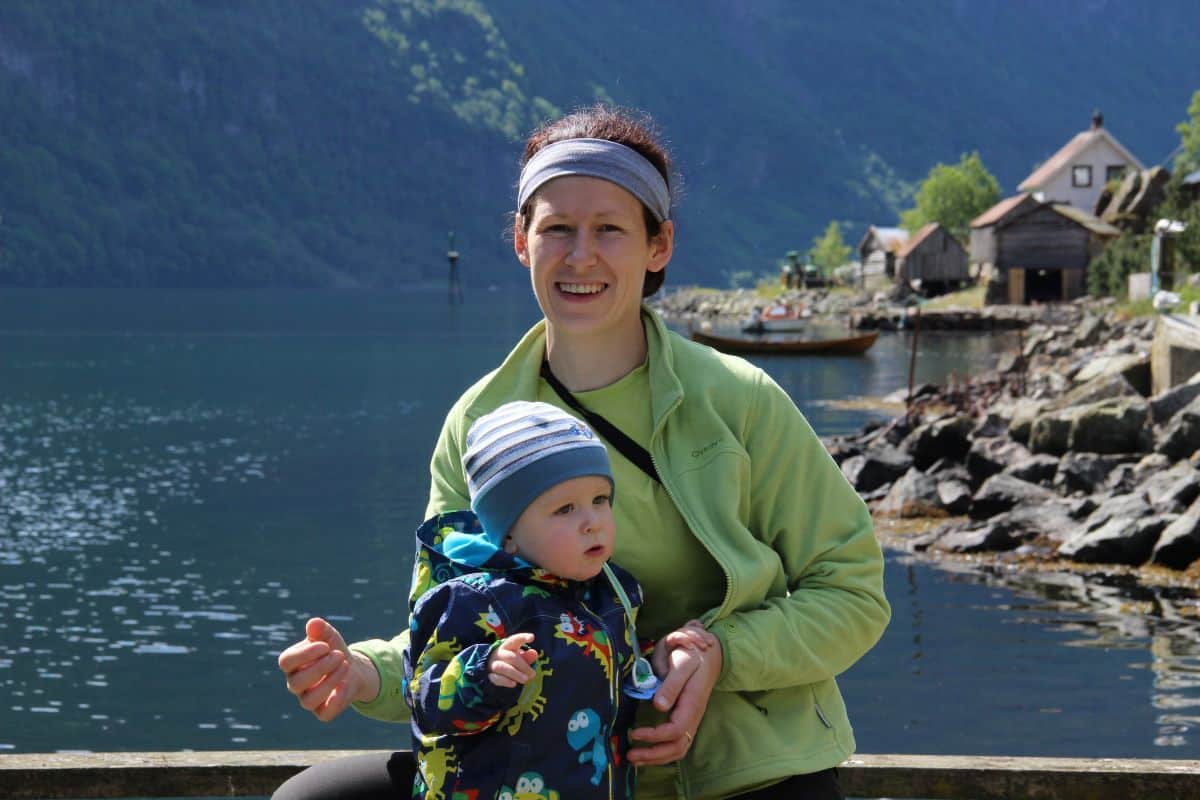
The “why” of taking a family road trip
Road trips with kids take a lot of planning and research. They also require a lot of patience, grace, and determination. So, why do we “torture” ourselves with hours of research and preparation? Why is it that we crave the adventure of a road trip, despite how many unknowns there are and unexpected things that could happen?
Well, I actually think that planning and preparing for an adventure is an adventure in itself. For me, I truly enjoy the process of choosing and planning an adventure for my family. It gives me so much to look forward to and makes the experience so much more valuable and meaningful to me when I put in the work and love to plan our holiday. I enjoy searching the internet and reading blogs about places we could visit and accommodations where we could stay. I like that we get to decide where we are going and how we will spend our time there, based on our family’s interests and personalities. Road trips give us so much independence, and I love the thrill of it.
I choose road trips because I want to create memories that are only ours. Memories that are unique to our family and our experiences. I want my children to grow into adults with stories to tell. And I want my children to grow into adventurous adults that try new things.
Sometimes, when I tell people about our adventures, they say, “I wish I knew how to do that.” Here is a simplified guide on how you can do it.
Where to go on your family-friendly European road trip
The first step in planning a European road trip is to figure out where you’d like to go. You probably already have some inspiration and an idea of places you would like to visit or an event you would like to attend. Determine where you would like to go and why. Get the whole family involved in the planning process. Ask the kids where they’d like to go, what they’d like to do, and what they’re interested in seeing. You might be surprised by their answers!
You can get inspired to travel in many different ways. Examples of road trip inspirations in our family include (1) trip to visit family, (2) an Instagram post that fascinated me, (3) a blog article I read, (4) a photo that piqued my interest, and (5) a story I heard from a friend about a destination.
Next summer, our adventures will include a visit to the Colosseum in Rome because it’s my younger son’s dream. He learned about the Roman Empire at school and wanted to see the Colosseum ever since. My older son wants to go back to Chamonix in the French Alps, which we visited last summer. And finally, we will be going home to visit our families in Poland. So, we already have 4 big dots (our parents live in different parts of Poland) on the map of Europe. Nearer the time, we will find places in-between and connect these dots.
Consider your interests and do your research
If you still don’t know where you’d like to go, consider the things that interest you the most. Do you enjoy the beach, the mountains, or forest locations? Is there any particular time period or historical figure that fascinates you? Do you speak a language you’d like to practice? Is there a particular food you’d like to try? Have you read about an area you’d like to experience first-hand? Are your kids studying anywhere in school that would interest them? Are there super inexpensive flights to anywhere that interests you (and then you could rent a car)?
Once you’ve chosen an area, start researching the location. YouTube has videos from most countries and regions in the world and there are many great travel blogs out there dedicated to kid-friendly trips and vacations. Simply type in “best places to see/visit in…” or “child-friendly activities in…” and voila! I’m sure something will catch your eye sooner or later.
When planning a road trip with children there are certain things we like to fit into our daily schedule to help break up the hours on the road and give the kids things to look forward to. My number one tip is to include ice cream and a playground stops into your daily routine. This combo definitely allows them to stretch, play, burn some every, enjoy a sweet treat, and forgive us for the long hours in a car.
My favourite travel destination since we became parents is Scandinavia. It’s such child child-friendly part of the world and easy to travel to. The nature is spectacular and their campsites are well equipped. Everywhere we went in Norway, there were waterfalls (kids loved spotting them) and even some trolls (wooden, not real). When we needed medical help, it was easy to find and very straightforward. Everywhere we went, we felt genuinely welcomed.
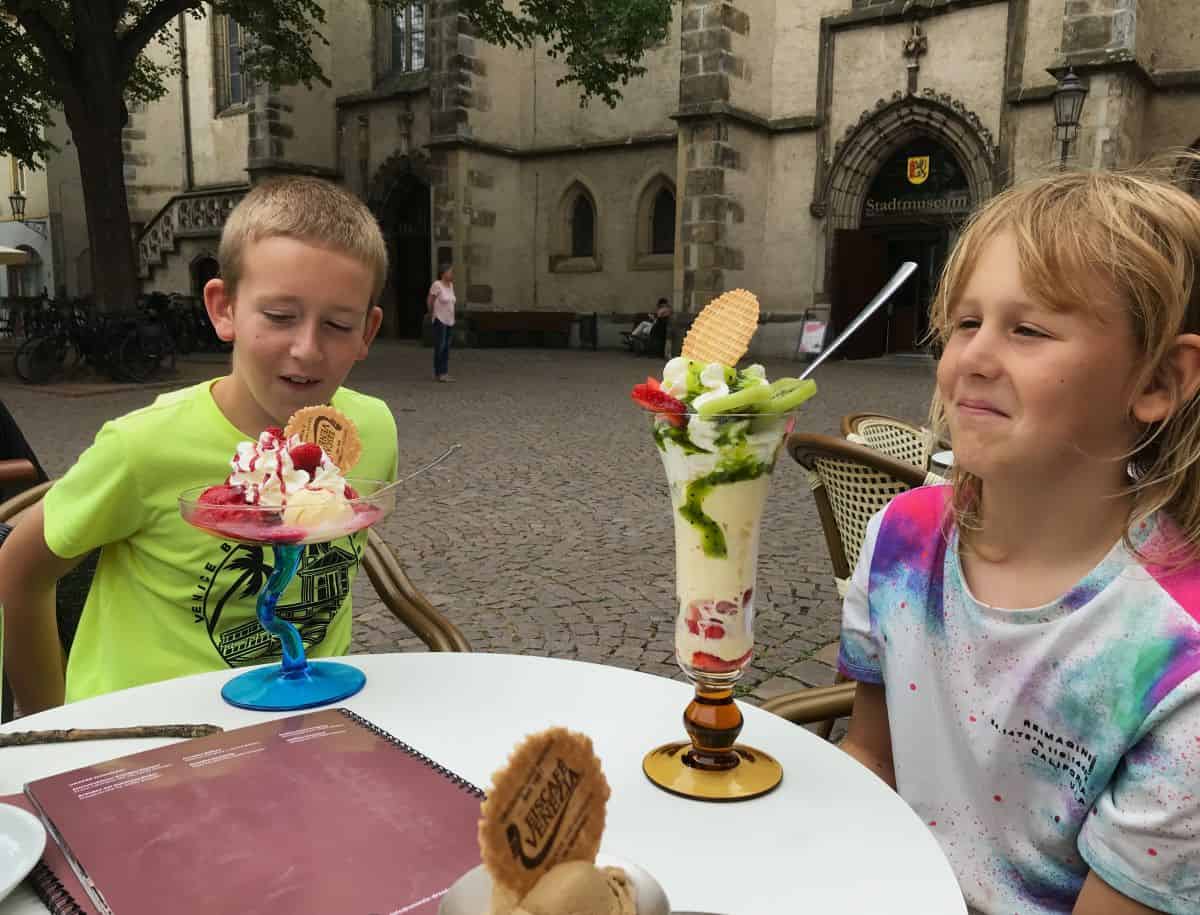
When to start planning
There’s no right or wrong time to start planning a road trip, but in my experience, the sooner you start planning your adventure, the better. Giving yourself more time to plan can help you feel more comfortable and confident on your trip. We’ve taken plenty of trips where we didn’t do much planning, but the ones we plan for always seem to go much better and smoother.
Depending on your mode of transport (your own car or flying somewhere and then renting a car), you will need to prioritise your steps. If you need to fly to your destination country, you will need to book your airplane tickets first. Then, the ticket dates are your trip dates, then you need to book a car and then plan your route and accommodations. Depending on your budget, time frame, and number of places you want to see, you might need to adjust your route.
The sooner you start looking at your trip and planning, the more choices you will have. My hack for starting booking a summer holiday is the time just before Christmas. This is usually far enough in advance for us to have a lot of options to choose from regarding activities and accommodations. Having choices is always important to us as it allows us to choose our accommodation rather than having to pick from what is left. It’s more flexible when travelling with a tent, but when looking for bargains and places which are interesting to stay, starting reservations early has always worked for us.
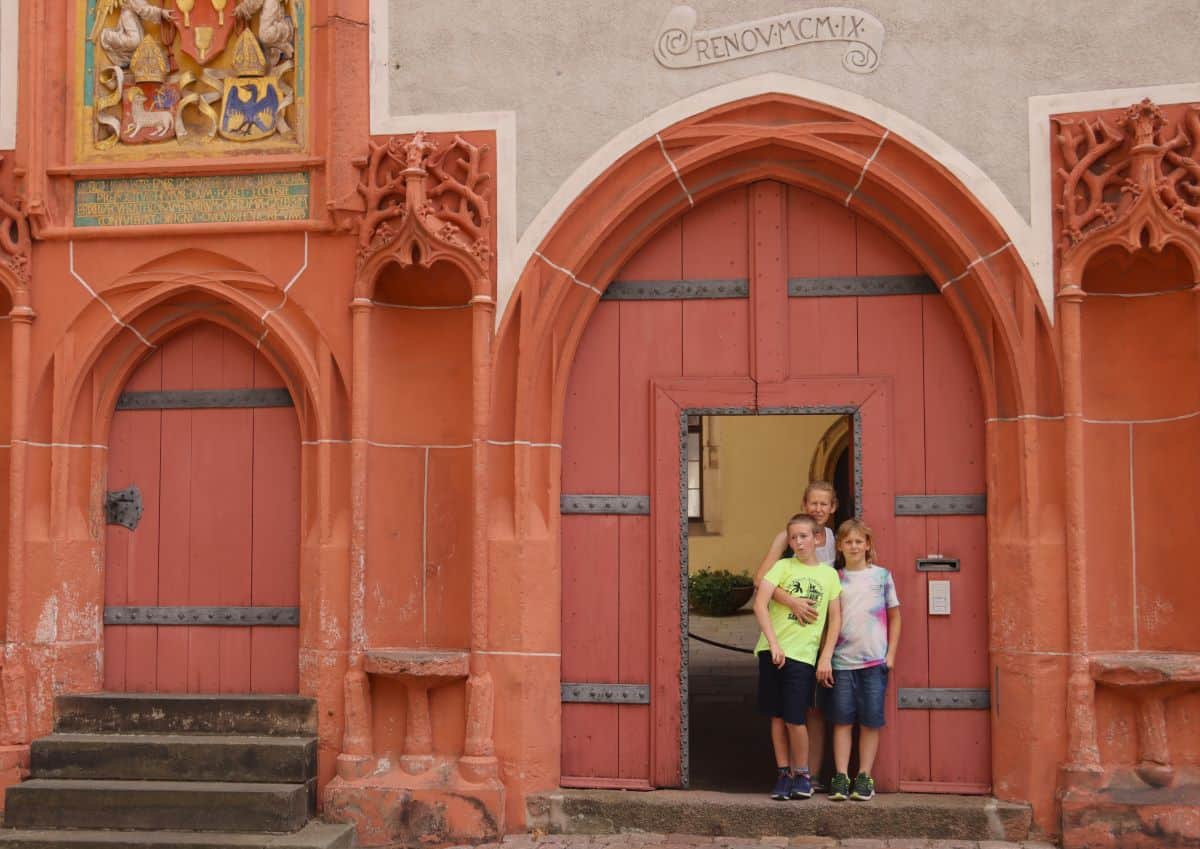
Transportation considerations
One of our favorite ways to explore a new location was to fly to a destination and rent a car there to explore. Flying somewhere and then renting a car is a great way to explore an area that’s further away, giving you more time in and around that location than you’d have if you had to drive there from home. We loved to look for inexpensive flights to locations that interested us and then book a car. Sometimes, it’s worth booking a flight and car bundle via the airline’s website, but not always.
However, this is not currently an option for us anymore. Our autistic son became very anxious about flying, and so we are now restricted to our car and where we can drive from our home location. Over the years, we’ve had some fantastic road trips in our everyday car (although we’re looking into the possibility of getting a van for our adventures this summer).
The advantage of skipping the plane and leaving straight from home is that we could load it up with the stuff we needed and didn’t have to pay for a plane ticket or a car rental. The big disadvantage is time. A flight could give us an opportunity to road trip in another part of Europe within a two-week timeframe. However, we are restricted to countries close to the UK. A car journey from the UK to mainland Europe has a ferry crossing in a package. Again, it’s a good idea to book it well in advance so you have options. For us, stopping near a ferry port in the evening and taking a ferry early in the morning works well.
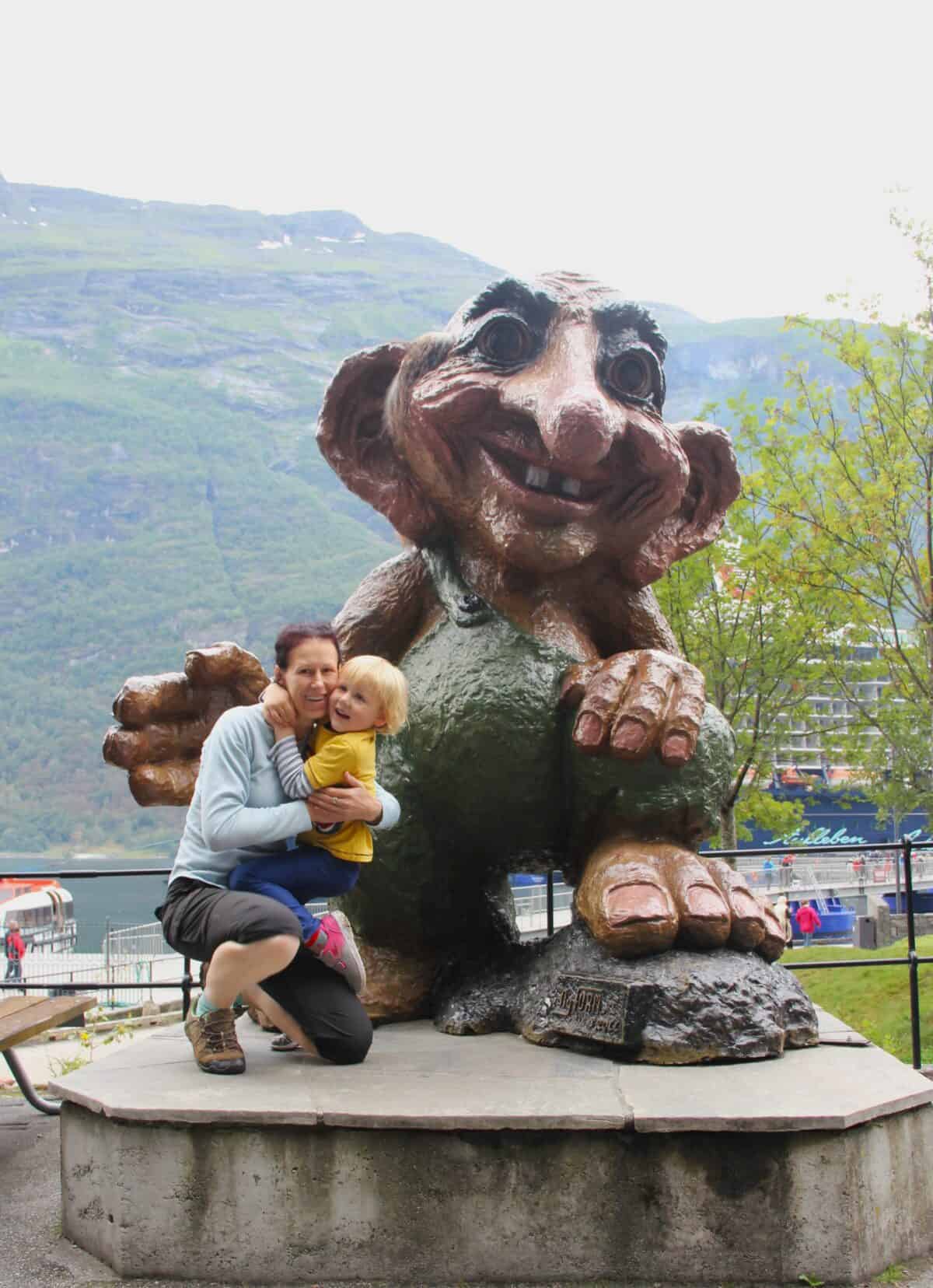
Accommodations while on a road trip with kids
There are a lot of different accommodation options when you’re traveling on a road trip. First and foremost, family-friendly hotels provide spacious rooms and amenities that often include play areas, kid-friendly menus, and sometimes even organized activities to keep the little ones entertained. Vacation rentals or serviced apartments offer home-like environments with fully equipped kitchens and separate bedrooms, fostering a sense of routine and comfort. Campgrounds and RV parks provide a nature-centric option for families seeking adventure, allowing children to explore the outdoors and engage in activities like hiking and camping. Additionally, themed resorts with on-site entertainment, water parks, and recreational facilities ensure an unforgettable experience for young travelers.
Camping road trips
We’ve done two road trips with our boys where we relied entirely on sleeping in a tent and one where we used a tent partially. For the rest of our road trips, we stayed in under-some-sort-of-roof accommodation. My children love camping, and we enjoyed the flexibility of traveling with a tent. Opting for campgrounds during a European road trip allows families to immerse themselves in nature while keeping accommodation costs in check. Setting up tents or parking RVs in campgrounds not only maximizes outdoor time with nature hikes and campfire evenings but also provides an economical lodging alternative, freeing up your budget for more memorable family activities and experiences along the road.
Unique accommodations
Looking for accommodation is an art (and a lot of fun!) in itself. We always have a limited budget, but we love to find interesting places to stay. To give you a few examples, we have experienced sleeping in:
- a barrel-shaped hideaway in Scotland, where an old whisky barrel from their local distillery transformed into a loo
- farm accommodation where our children were invited to feed farm animals and spend time with them
- an apartment in France that had discrete, modern touches but looked like out of a 1920’s movie
- a converted horse box (with cute mini pigs to pet)
- organic farm with an outdoor kitchen on the Orkney Islands
Researching accommodations
We use the big websites to search for accommodation as well as focus on the area where we want to stop and use the search engine to find places that choose not to advertise themselves via big brands. Example: you can type “Keswick” (a lovely town near us) as your destination using well-known websites, then check keswick.org for “where to stay” and simply enter “Keswick accommodation” into the search engine to find individual websites of people who offer accommodation but opt of selling them under the umbrella of large marketplaces.
When travelling abroad, it’s worth visiting various blogs to see how things work where we are going. On our two separate Norwegian road trips, we’ve nailed it! We slept in simple wooden cabins that were cheap, well-kept, and well-equipped all because we discovered the Norwegian word “hytte” (which means “cabin”), so we were able to use that when searching online for accommodations. A little play with the English-Norwegian Google translation gave us access to so many more cabins/hyttes than the English sites would. Their prices were also lower.
Scandinavia amazes me with its camping amenities (tent and cabins). Wherever we stayed, we had access to a proper kitchen (in the UK, that isn’t the case) so cooking was always easy and available.
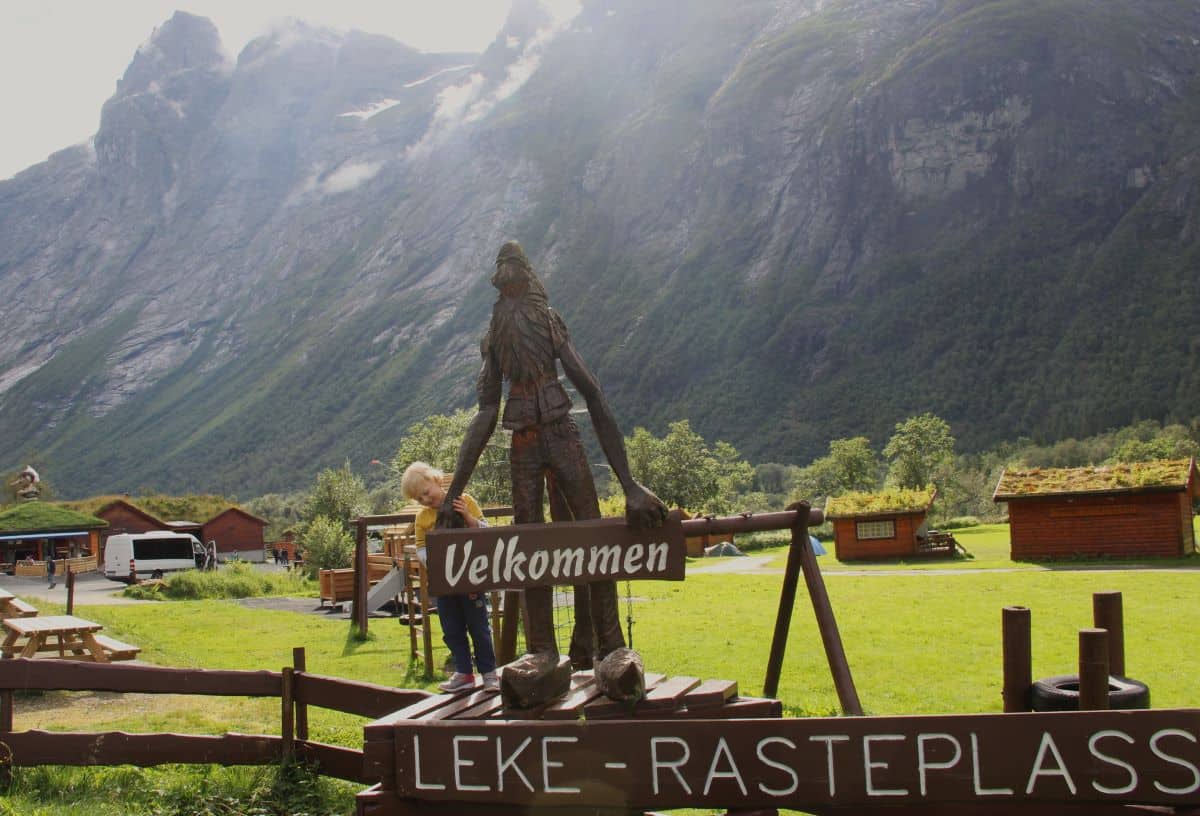
Choosing your road trip route
The road trips we go on aren’t crazy long. Both of my boys have always made it clear that they don’t enjoy very long distances in a car and get bored with long hours on a motorway. Therefore, we try not to drive more than 6 hours in one day. Also, if we stay somewhere for one night, we try to stop for two or three nights in the next place. This schedule works well for us.
Not driving very long distances also allows for some flexibility, which is such an important element of road trips. When we drive from one place to another, we find a place where we can stop for a while to stretch our legs and try to do some sightseeing. Europe seems to be dotted with little, beautiful towns and interesting places, where just walking around, taking it in, and having an ice cream seem to make us all happy.
Finding pretty little towns along the way
If you don’t know how to find a pretty town or village, do a Google search for “pretty town in [region].” You’d be amazed at how well that works! I like to have an idea of where nice places are before we set off. Not only does this help with planning stops, but also because I wouldn’t like to miss something obvious while travelling.
Likewise, we usually like to have some expectations about the places where we stay for a bit longer. We want the accommodation to be decent and interesting and to be in an area where we can see something. The first example that comes to my mind is our three-night stay near the Trolls Road in Norway. We had time to explore the area and enjoy the winding road each day. Similarly, staying on an organic farm on Orkneys allowed us to explore the islands as well as enjoy our time on the farm.
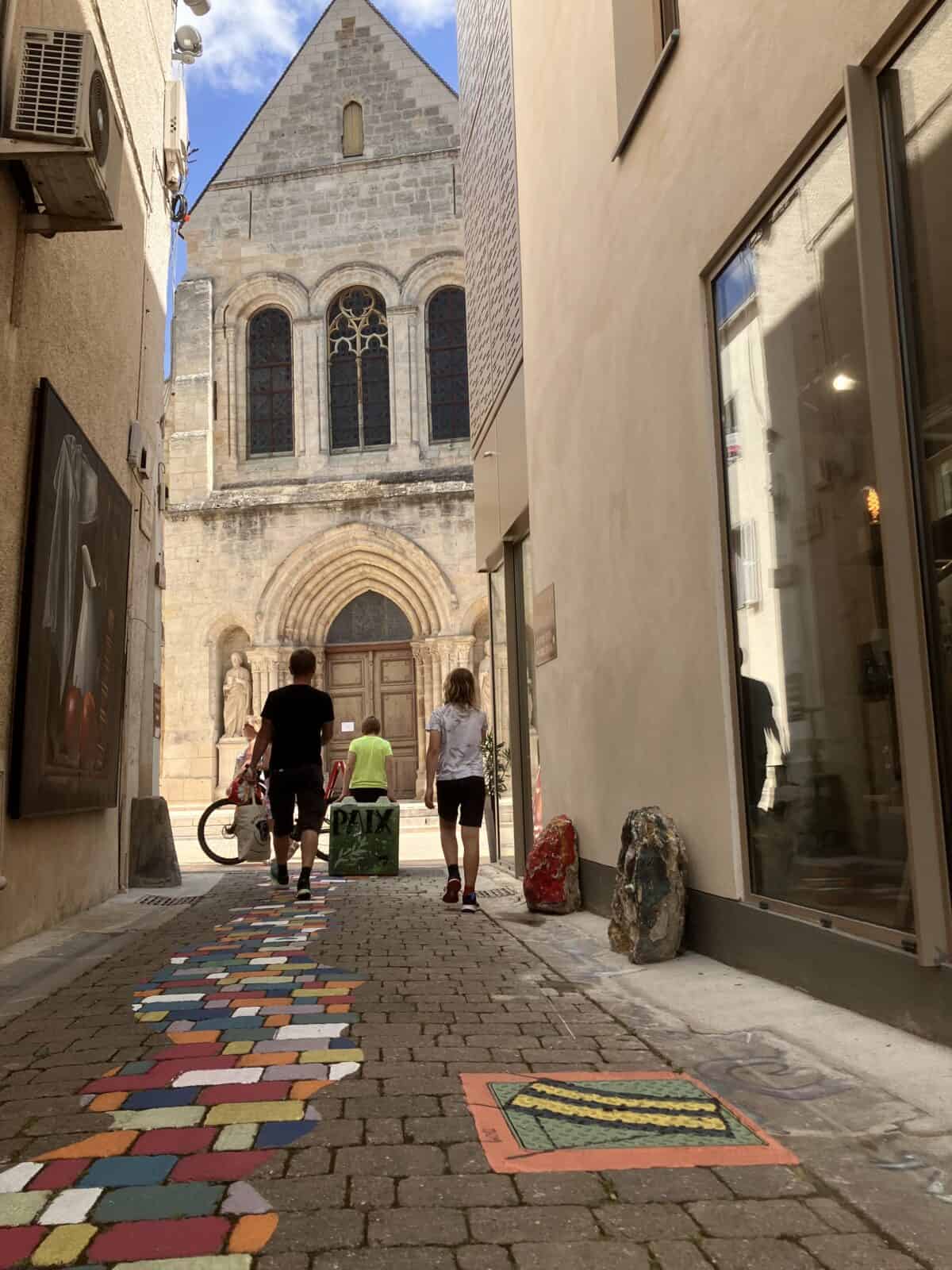
Ideas for what to see with kids on a European road trip
Because my autistic child gets sensory overload in big cities, we avoid too many urban areas in our travels. If we go to a city we make sure we can compensate for the stress by spending some time outdoor and in quiet nature afterward.
A few of our favorite outdoor kid-friendly things to do and places to explore on road trips are nature reserves, small museums, open-air museums, visitor centers, working farms open to the public, castles, street art exhibitions, small towns, places where we can hike, forests, beaches, places where we can see some animals.
We also pay attention to what we don’t have at home. We look for different architecture, new experiences, or something unique to the area. For example, we loved making the most of chairlifts and gondolas in Chamonix Valley in the French Alps, visiting a Dinosaur-themed amusement park in Poland, and exploring the biggest aquarium in Europe in northern France. We don’t do too many “big things” within one trip, but these were all worth it.
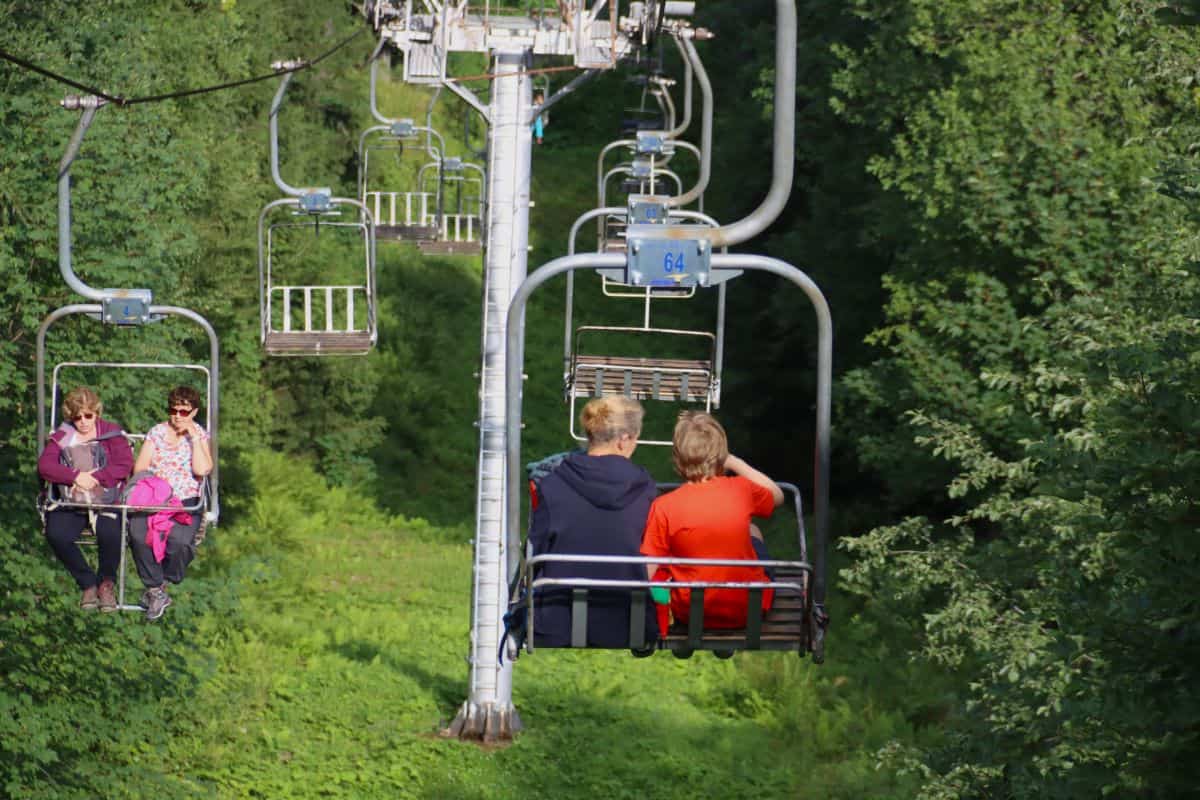
Making it fun for the kids
The first and obvious element of organising a road trip with children is to ask them what they would like to do and see. To keep everyone happy, we usually do our research first, and then give them a few options to choose from. I think it’s important they feel included and that they have a say.
On the other hand, we want to expand their world and knowledge as well as see places that interest us, too (otherwise, we would end up visiting train stations and dinosaur parks all over Europe). Visiting a melting glacier in the Chamonix Valley wouldn’t have been their first choice, but my autistic child loved a train ride there and back, while his brother found being inside a real glacier fascinating. It was a win-win for everyone.
Their choice of activity in the area was to go swimming in a nearby lake each evening, which we happily agreed to and all enjoyed very much. As I have already mentioned, a daily visit to a playground and a nice ice cream is something that is interweaved into our daily holiday routine.
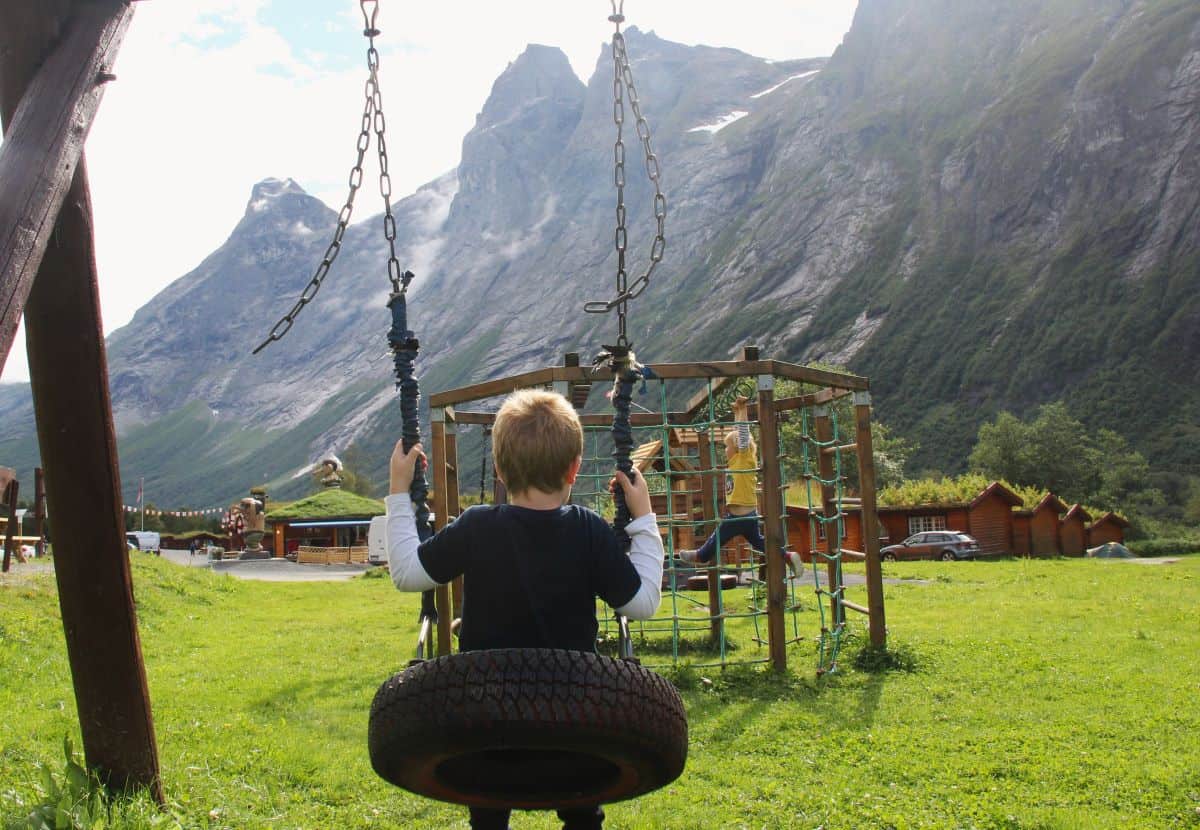
What to take with you on a European road trip with kids
In addition to obvious items like passports, cameras, phone chargers, and clothes, we usually pack the following items for a family road trip:
- Cooking – some pots and pans (even when flying, we took one each and left them, after asking if that’s ok, in communal kitchens after our last sleep in the country)
- Medicines – including children’s cold meds/painkillers, plasters, a thermometer (bulky, but we never regretted taking a thermometer)
- Toys – a ball, some board games (Monopoly was our last summer’s hit), trivia for the car, some books
- Activity packs – paper and crayons (believe me or not, we had to buy A4 paper for our boys one year, as they insisted on a drawing session each evening)
- Snacks – their favourite snacks from home, it’s so much easier (and cheaper) to have their favourite selection on hand and at the ready
- Autism specific items – Stefan misses home on holidays, so we go around the house and garden and take photos which he can look at while away. We also take small sensory toys, his favourite blanket and a plush toy.
- Tablets – we take kids’ tablets too; nothing beats a bit of Minecraft when we need to keep them busy
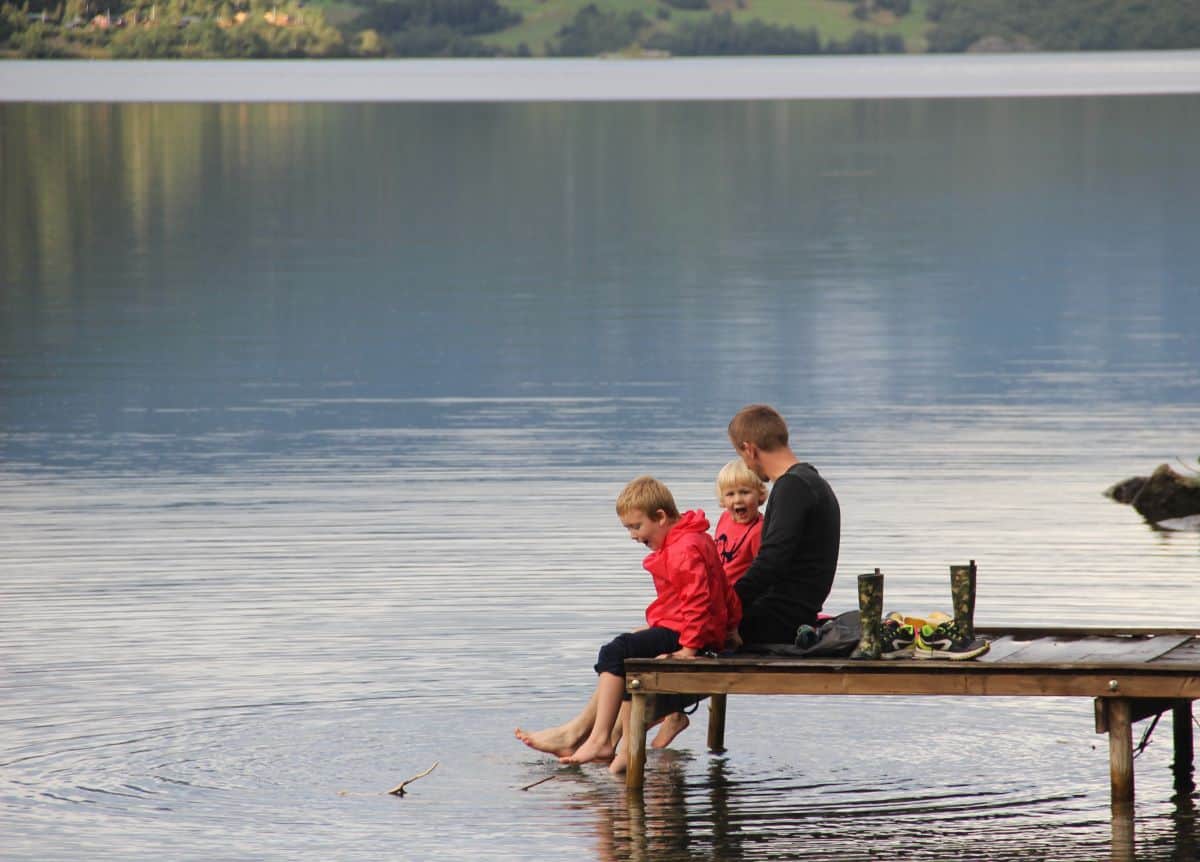
Dangers and how to avoid them
Where there are children, there is chaos. Where there is chaos, unexpected things could happen. We like to be as prepared as possible for unexpected situations and have a game plan ahead of time for how we’ll handle them.
Elopement
As parents to an autistic child, one of our greatest fears is that our child would walk away unnoticed (it’s called elopement). Walking away while their adults are busy is a skill that autistic children are excellent at. While in the UK, we use a sunflower lanyard (which is voluntarily worn by people with hidden disabilities), so that members of the public are aware that our child is vulnerable and might need help. We make sure to bring that lanyard with us and that Stephan is wearing it when in public places.
Overstimulation
Another danger that is relatable to both of my children is overdoing it. Many times, seeing them being excited about something, indulging in their excitement, and missing subtle signs of overstimulation, we ended up with unnecessary upset. Meltdowns and tantrums happen, but I’m pleased to say that with age, they’ve learned how to manage their own emotions and we became more vigilant to signs of tiredness.
Going over budget
And for adults, sticking to a budget and not overspending is a concern while vacationing. We try to have our main expenses covered before we set off (e.g., accommodations, renting a car, pre-booking expensive attractions) and to have an idea of how much money we might spend on average per day. Nobody likes thinking too much about money while enjoying their well-deserved time away. However, it’s good to be prepared. Good car insurance, travel insurance, and having our car checked before leaving home are the basics we should take care of to avoid stress and unwanted expenses.
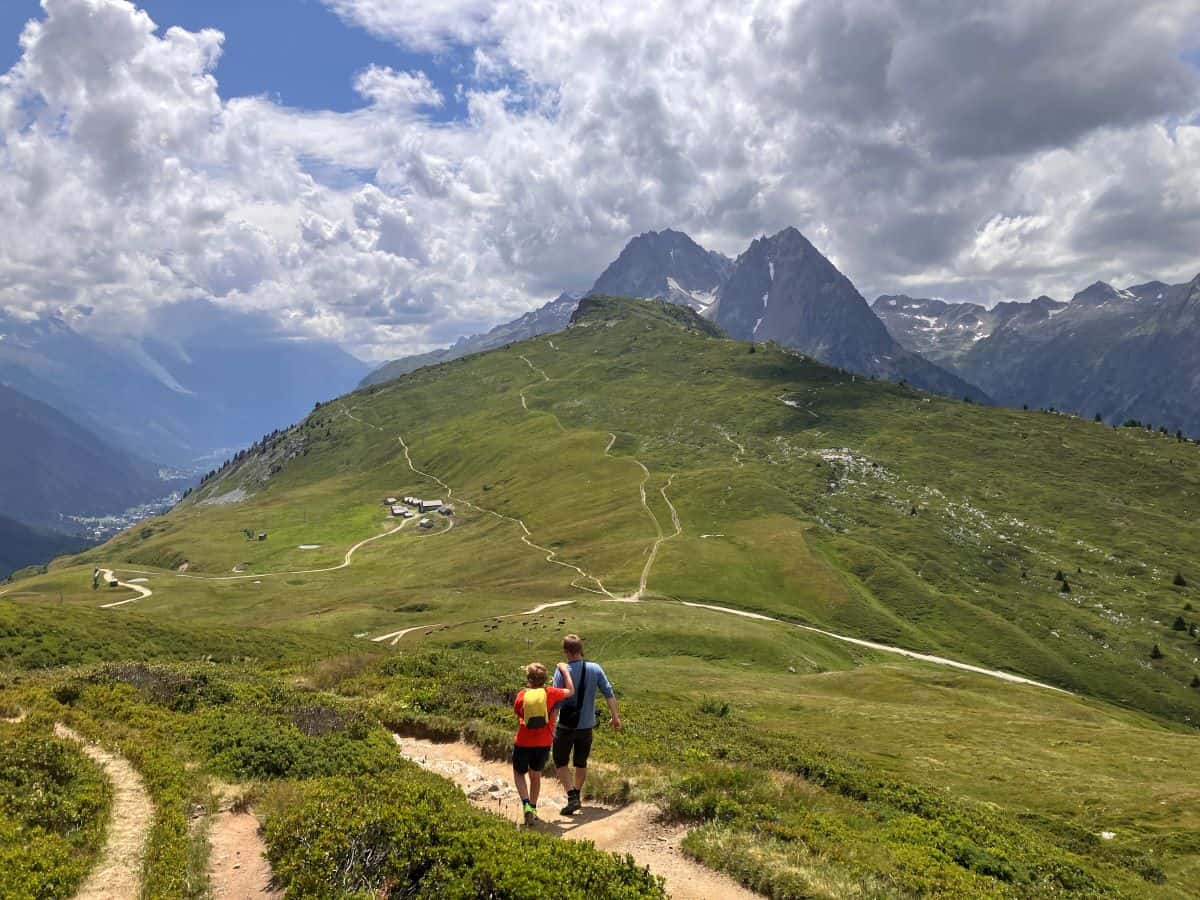
Money-saving, budget-friendly road trip tips
If your budget is tight, but you still want to have an amazing adventure, it can absolutely be done! Below are some tips on how to plan a road trip on a budget:
- Bring your own car.
- Pack a cooler and bring lots of food and snacks that the whole family enjoys to keep you away from “hunger stops.”
- Take water bottles (in the UK kitchen, tap water is safe to drink), so you don’t have to buy water.
- Take long-life shelf-stable food from home (e.g., jars, cans, and tins) and top up with fresh food in local supermarkets. Don’t eat out at restaurants often. You can cook quick meals on your own with your staples.
- Invest in a tent and camp. Campsites vary throughout Europe in terms of facilities. In Scandinavia, every campsite we went to had a kitchen with cookers. Some had ovens and even some pans and pots.
- Buy a camping cooker. It will allow you to heat up ready meals and boil water for hot drinks.
- When going in a specific region it’s worth planning what you want to see. For example, if you want to visit Scotland, known for its many beautiful castles, you might want to consider buying a Historic Scotland membership and having unlimited access to the castles under their scheme.
- Make sure you pack all your clothes, medicines and equipment, as buying when needed might cost more than you usually pay.
- We take our bicycles with us. Buying a bike rack was a good investment; renting bikes for a family of four would be expensive.

Experiencing a road trip through the eyes of your child
As adults, we all have our unique sets of experiences. Those of us who have been to certain places experience travelling differently than those who do it for the first time. And, if you are a child, everything new or different can be exciting.
Here are examples of what I have rediscovered through our family road trips and being a part of my kids’ experiences:
- Don’t underestimate how simple everyday activities are new and different in a new place. A simple visit to a supermarket in another country is fascinating and can take hours. My children are absolutely fascinated by different layouts and products in shops abroad. I never would have imagined that years later we’d still be talking about these visits and that they remember the names of these shops.
- People dress differently in different countries. Kids are observant and can be very interested in what people wear in different places you travel.
- The vehicles on the road can be vary different from country to country. For example, there are so many bicycles in the Netherlands compared to the huge variety of campervans in Norway.
- Climate and temperature differ, even in the same month/season. Summer swimming in Poland is a very different experience than swimming in Sweden in the same month.
- No two places are ever the same. And no two visits to the same place are the same. Every visit and every place provides a different experience.
- Foreign languages while abroad are fascinating. From listening to the people using the language to foreign language on road signs. Us trying to communicate in places where people don’t speak English is also hilarious to our children.
- The feeling of being a guest somewhere is such a special and unique experience.
- All these little mistakes and mishaps we have on our adventures sometimes turn out to be the funniest stories and memories (e.g. shops being closed on Sundays in some countries or places where you can only pay with cash…oops.)
- Driving our car on the right side of the road, while it’s on the left in the UK, is a whole other experience!
- Different accents across the UK are so interesting.
- The ability to decide what we want to do and how and the freedom to change our mind is priceless.
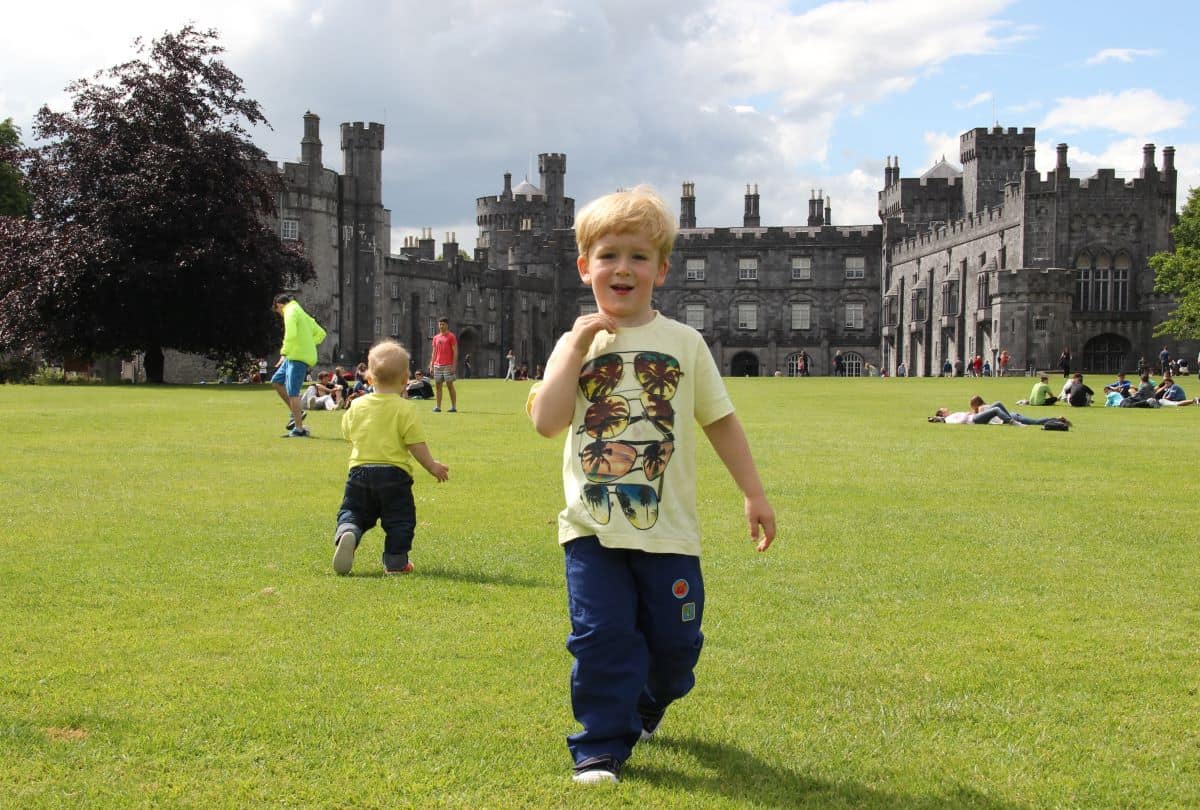
Are you ready for a road trip yet?
Trying something new can be both overwhelming and exciting. And that’s absolutely fine. Travelling with kids is a full-on experience; it requires effort, but it’s very exciting, too. Having a unique, self-designed, and self-made adventure can be truly rewarding, and that’s just what a road trip is!
As I write this article, we are slowly planning our next year’s adventure, which fills me with excitement about the adventures to come. I hope, that having a simple “what to do and how” guide will encourage you to try something new and will help you to create your own family road-trip adventure.
Would you consider going on a European road trip some day?
About the author
Anna is a mum of two energetic boys and the wife of Cezary. Before they started a family, they enjoyed backpacking and hitchhiking. Once the kids arrived, they adjusted their lifestyle and settled down in the beautiful Lake District, in the northwest of England. It’s often foggy and rainy where they live, but, they are outdoors in any weather. Anna is an ultramarathon runner, and Cezary loves triathlons, so, the children grow up being involved in hiking, trail running, cycling, all-year-round wild water swimming, and camping.
Stefan is 12 years old and has been diagnosed with Autism Spectrum Disorder and ADHD. Antek is a neurotypical 10-year-old. Anna believes in positive psychology, in creating good moments and capturing memories. She believes being outdoors brings them together as a family and advocates for children with additional needs to be encouraged to explore and play outside. She trusts nature is a natural playground, enriches and stimulates the senses, and this is where she sees her children happiest.
You can find more from Anna in the following online location:
Instagram: @celebrating_my_boys_journey
All RWMC posts: Anna Stopinska-Lewucha

